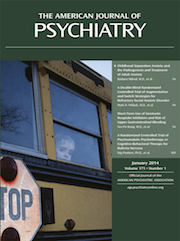Cognitive-Behavior Therapy for Children and Adolescents
This is an excellent overview of cognitive-behavioral therapy (CBT) in children and adolescents who present for psychiatric treatment, with chapters written by the leading experts in the field. The book is focused on empirically based approaches and is written in a manualized style outlining the different strategies of CBT that have been found to be effective in treating each disorder.
The book begins with important coverage of basic knowledge relative to all diagnoses, including the history of CBT, the CBT model, developmental and cultural considerations, case formulation, combination approaches in treatment for youths (medication and CBT), and myths or inaccuracies regarding CBT. However, the book also provides a diagnostic and problem-based approach covering the major diagnostic groups for whom CBT is indicated. Chapters include valuable information on treating depression and suicide, bipolar disorder, obsessive-compulsive disorder, anxiety disorders, posttraumatic stress disorder, disruptive behavior disorders, and chronic physical illnesses (inflammatory bowel disease and polycystic ovary syndrome), as well as other conditions (obesity, enuresis, and encopresis). Each section includes a brief review of the empirical literature, key points, developmental and cultural considerations, treatment obstacles and challenges, and a self-assessment to measure mastery of the chapter content. Applications and case examples, including therapist language, are integrated throughout the book.
Particularly useful is the amount of detail included that illustrates the treatment strategies that are recommended for each disorder or condition. For example, in the chapter on CBT for children and adolescents with chronic physical illnesses, the authors describe how to conduct family sessions for this population. Three family sessions are outlined with the goal of improving family communication and helping parents function as CBT coaches. Included is a family de-stressing game, which is played at home as a homework assignment. The goal is to earn popsicle sticks by doing or saying something nice to others in the family over a 5- to 7-day period. This level of detail exists in most of the chapters. For example, there is a large appendix included with the chapter on working with obesity and depression, which includes several useful worksheets from the Healthy Bodies, Healthy Minds program.
This book will serve as a useful resource for clinicians, as well as graduate students, interns, and residents in psychiatry and the mental health fields. The book includes helpful resources, such as websites, worksheets, and suggested readings within each chapter. In addition, the book includes a DVD that provides demonstrations of the techniques, strategies, and overall approach to treating several of the patient populations presented.
This book distinguishes itself from others in the field through its comprehensive coverage of the treatment of major diagnoses in child psychiatry, as well as its detailed how-to instructions on applying CBT strategies over a treatment course in a session-by-session format. With its review of the empirical underpinnings of each disorder-based treatment combined with its practical guide to the treatment of these patients, Cognitive-Behavior Therapy for Children and Adolescents works to bridge the scientific and treatment literature into one volume of work. Thus, a clinician can feel comfortable discussing the scientific basis for this approach with parents and youths, as well as feel confident that they have the clinical tools recommended by the experts in the field. While CBT is the treatment approach with the most empirical support, it is not widely disseminated or readily available to clinical practitioners. This book represents a major step forward in disseminating scientifically based treatment strategies in clinical care. Its easy-to-read, detailed approach will be a valuable tool for clinicians in pediatric mental health.



